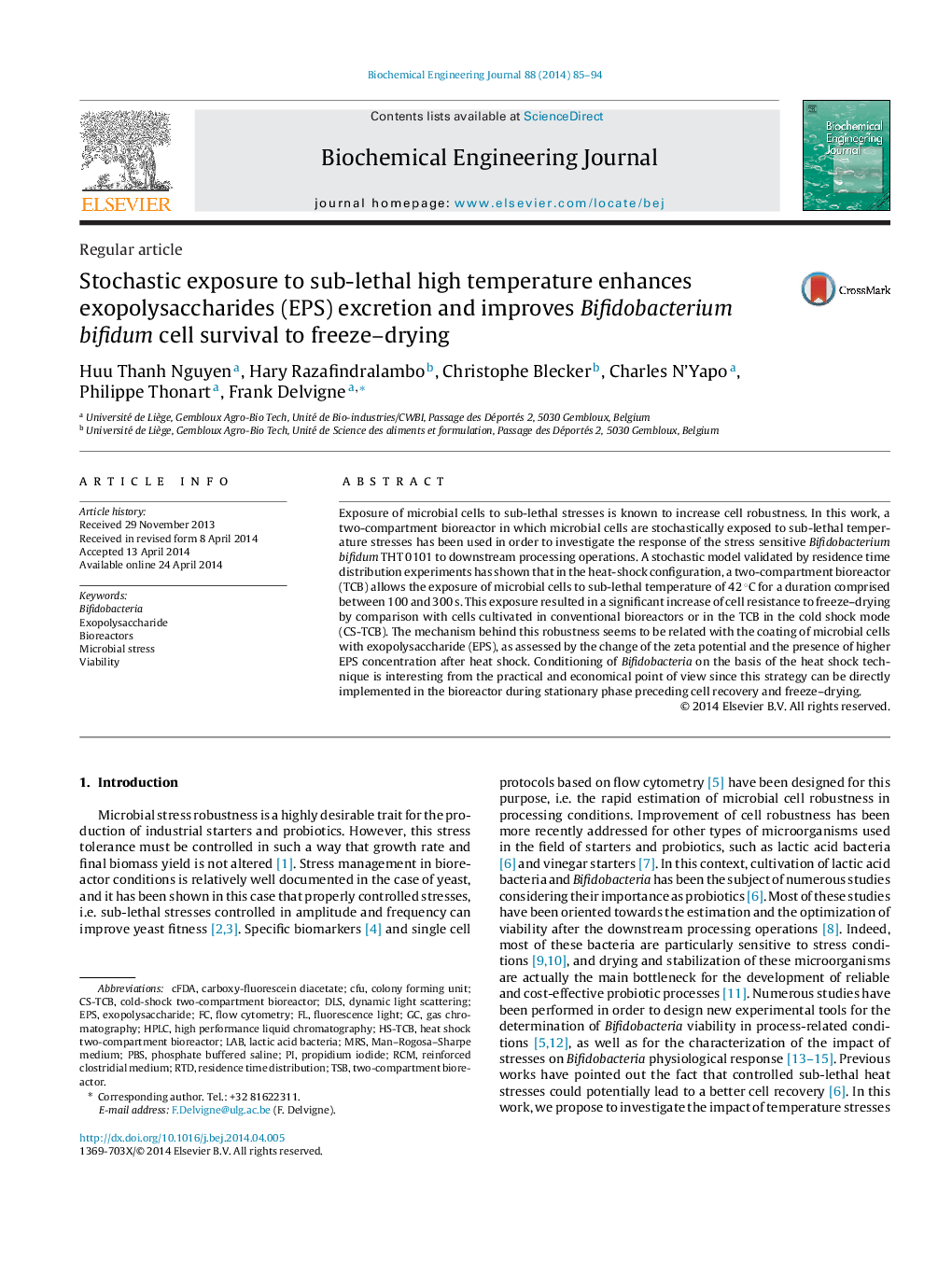| Article ID | Journal | Published Year | Pages | File Type |
|---|---|---|---|---|
| 3157 | Biochemical Engineering Journal | 2014 | 10 Pages |
•Bifidobacteria viability is improved in a two-compartment scale-down reactor with sub-lethal heat stress.•Mild heat stress induces EPS overproduction.•EPS protects cells from freeze drying stress.•The method has a high scalability potential.
Exposure of microbial cells to sub-lethal stresses is known to increase cell robustness. In this work, a two-compartment bioreactor in which microbial cells are stochastically exposed to sub-lethal temperature stresses has been used in order to investigate the response of the stress sensitive Bifidobacterium bifidum THT 0101 to downstream processing operations. A stochastic model validated by residence time distribution experiments has shown that in the heat-shock configuration, a two-compartment bioreactor (TCB) allows the exposure of microbial cells to sub-lethal temperature of 42 °C for a duration comprised between 100 and 300 s. This exposure resulted in a significant increase of cell resistance to freeze–drying by comparison with cells cultivated in conventional bioreactors or in the TCB in the cold shock mode (CS-TCB). The mechanism behind this robustness seems to be related with the coating of microbial cells with exopolysaccharide (EPS), as assessed by the change of the zeta potential and the presence of higher EPS concentration after heat shock. Conditioning of Bifidobacteria on the basis of the heat shock technique is interesting from the practical and economical point of view since this strategy can be directly implemented in the bioreactor during stationary phase preceding cell recovery and freeze–drying.
Graphical abstractFigure optionsDownload full-size imageDownload as PowerPoint slide
